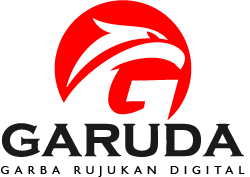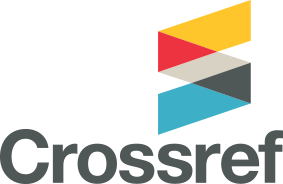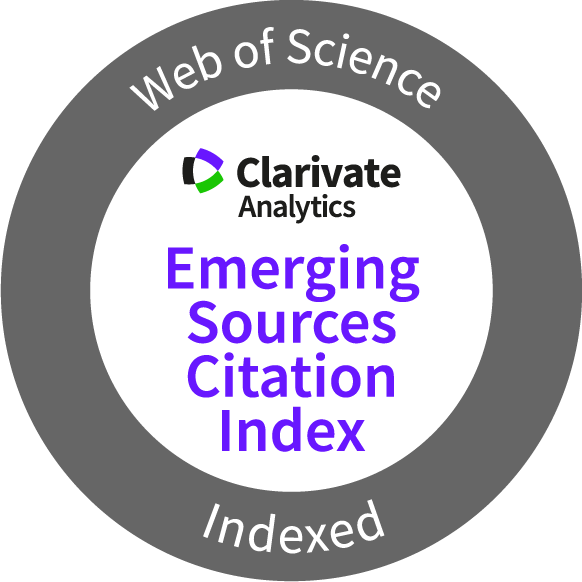Differences in Elastin and Collagen Levels in the Levator Ani Muscle of Primiparous and Multiparous Normal Postpartum Women
Abstract
The levator ani, comprising the pubococcygeus, puborectalis, and iliococcygeus muscles, is crucial for supporting pelvic organs, maintaining continence, and ensuring pelvic stability. Weaknesses in these muscles or ligaments can lead to pelvic organ prolapse (POP), a condition where the pelvic organs descend and protrude through the vaginal introitus. Collagen and elastin, the key constituents of the extracellular matrix in the levator ani muscle, play a significant role in maintaining its structural integrity and can be influenced by parity. This study aimed to determine the differences in elastin and collagen levels of the levator ani muscle of primiparous and multiparous patients. This was an observational analytical study on 18 postpartum female patients consisting of 9 primiparous and 9 multiparous in January-March 2023. Samples were levator ani muscle biopsies from perineal lacerations of at least grade II from the inpatient Obgyn Department of the Faculty of Medicine, Universitas Brawijaya. Examination was done using the immunohistochemical method. Results showed that the percentage of histological area secreting elastin and collagen was higher in the primiparous group than multiparous, thus the levels were higher (p<0.001; p=0.001; p<0.05). In conclusion, elastin and collagen levels were lower in multiparous women compared to primiparous women. Future studies can evaluate factors affecting the decline in elastin and collagen in multiparous women using a larger sample size.
Keywords
Full Text:
PDFReferences
- Handa VL, Roem J, Blomquist JL, Dietz HP, Muñoz A. Pelvic organ prolapse as a function of levator ani avulsion, hiatus size, and strength. Am J Obstet Gynecol. 2019 Jul;221(1):41.e1-41.e7. doi: 10.1016/j.ajog.2019.03.004
- Aboseif C, Liu P. Pelvic Organ Prolapse. In: StatPearls [Internet]. Treasure Island (FL): StatPearls Publishing; 2022 Jan. Updated 2022 May 1.
- Chen CJ, Thompson H. Uterine Prolapse. In: StatPearls [Internet]. Treasure Island (FL): StatPearls Publishing; 2022 Jan-. Updated 2022 May 8.
- Pangastuti N, Sari DCR, Santoso BI, Agustiningsih D, Emilia O. Gambaran faktor risiko prolaps organ panggul pasca persalinan vaginal di Daerah Istimewa Yogyakarta. MKB. 2018;50(2):102–8.
- Qureshi SS, Gupta JK. Pelvic organ prolapse: prevalence and risk factors. Am J PharmTech Res. 2015;15(6):122–8.
- Shi JW, Lai ZZ, Yang HL, Yang SL, Wang CJ, Ao D, et al. Collagen at the maternal-fetal interface in human pregnancy. Int J Biol Sci. 2020;16(12):2220–34.
- Rahajeng R. The increased of MMP-9 and MMP-2 with the decreased of TIMP-1 on the uterosacral ligament after childbirth. Pan Afr Med J. 2018;30:283.
- Gong R, Xia Z. Collagen changes in pelvic support tissues in women with pelvic organ prolapse. Eur J Obstet Gynecol Reprod Biol. 2019;234:185–9.
- Tang JH, Zhong C, Wen W, Wu R, Liu Y, Du LF. Quantifying levator ani muscle elasticity under normal and prolapse conditions by shear wave elastography: a preliminary study. J Ultrasound Med. 2020;39(7):1379–88. doi:10.1002/jum.15232
- Chi N, Lozo S, Rathnayake RAC, Botros-Brey S, Ma Y, Damaser M, Wang RR. Distinctive structure, composition and biomechanics of collagen fibrils in vaginal wall connective tissues associated with pelvic organ prolapse. Acta Biomaterialia. 2022;152:335–44. doi:10.1016/j.actbio.2022.08.059
- Weintraub AY, Glinter H, Marcus-Braun N. Narrative review of the epidemiology, diagnosis and pathophysiology of pelvic organ prolapse. Int Braz J Urol. 2020;46(1):5–14. doi:10.1590/S1677-5538.IBJU.2018.0581
- Guler Z, Roovers JP. Role of fibroblasts and myofibroblasts on the pathogenesis and treatment of pelvic organ Prolapse. Biomolecules. 2022;12(1):94.
- Downing KT, Billah M, Raparia E, Shah A, Silverstein MC, Ahmad A, Boutis GS. The role of mode of delivery on elastic fiber architecture and vaginal vault elasticity: a rodent model study. J Mech Behav Biomed Mater. 2014;29:190–8.
- Setyaningrum T, Listiawan MY, Tjokroprawiro BA, Santoso BI, Prakoeswa CR, Widjiati W. Role of elastin expression in thickening the postpartum vaginal wall in virgin and postpartum rat models. World’s Vet J. 2021;11(2):228–34.
- Szymański JK, Słabuszewska-Jóźwiak A, Jakiel G. Vaginal aging-what we know and what we do not know. Int J Environ Res Public Health. 2021;18(9):4935.
- Mao M, Li Y, Zhang Y, Kang J, Zhu L. Tissue composition and biomechanical property changes in the vaginal wall of ovariectomized young rats. BioMed Res Int. 2019;2019:8921284.
- Dhital B, Gul-E-Noor F, Downing KT, Hirsch S, Boutis GS. Pregnancy-induced dynamical and structural changes of reproductive tract collagen. Biophys J. 2016;111(1):57–68.
- Ouellette A, Mahendroo M, Nallasamy S. Collagen and elastic fiber remodeling in the pregnant mouse myometrium. Biol Reprod. 2022;107(3):741–51.
- Emmerson S, Young N, Rosamilia A, Parkinson L, Edwards SL, Vashi AV, et al. Ovine multiparity is associated with diminished vaginal muscularis, increased elastic fibres and vaginal wall weakness: implication for pelvic organ prolapse. Sci Rep. 2017;7:45709.
DOI: https://doi.org/10.15395/mkb.v56.3694
Article Metrics
Abstract view : 501 timesPDF - 210 times

This work is licensed under a Creative Commons Attribution-NonCommercial 4.0 International License.

MKB is licensed under a Creative Commons Attribution-NonCommercial 4.0 International License
View My Stats






